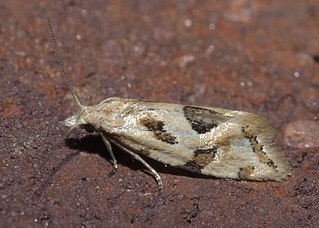
Lepidoptera is an order of insects that includes butterflies and moths. About 180,000 species of the Lepidoptera have been described, representing ten percent of the total described species of living organisms, and placed in 126 families and 46 superfamilies. It is one of the most widespread and widely recognizable insect orders in the world. The Lepidoptera show many variations of the basic body structure that have evolved to gain advantages in lifestyle and distribution. Recent estimates suggest the order may have more species than earlier thought, and is among the four most species-rich orders, along with the Hymenoptera, Diptera, and Coleoptera.

The arcuate line of rectus sheath is a line of demarcation corresponding to the free inferior margin of the posterior layer of the rectus sheath inferior to which only the anterior layer of the rectus sheath is present and the rectus abdominis muscle is therefore in direct contact with the transversalis fascia. The arcuate line is concave inferior-wards.

Somatochlora, or the striped emeralds, is a genus of dragonflies in the family Corduliidae with 42 described species found across the Northern Hemisphere.
Agathiphaga is a genus of moths, known as kauri moths. It is the only living in the family Agathiphagidae. This caddisfly-like lineage of primitive moths was first reported by Lionel Jack Dumbleton in 1952, as a new genus of Micropterigidae.
Lipoatrophia annularis is a skin condition affecting primarily women, characterized by the loss of subcutaneous fat in the upper extremity.

Aulacodes is a genus of moths of the family Crambidae. The genus was first described by Achille Guenée in 1854.

Diplurodes is a genus of moths in the family Geometridae.

The jamming avoidance response is a behavior of some species of weakly electric fish. It occurs when two electric fish with wave discharges meet – if their discharge frequencies are very similar, each fish shifts its discharge frequency to increase the difference between the two. By doing this, both fish prevent jamming of their sense of electroreception.

Aethes is a genus of moths belonging to the subfamily Tortricinae of the family Tortricidae.

Euthyatira lorata is a moth of the family Drepanidae. It is found in wet coastal forests in north-western North America, including Oregon and Washington.
Drug-induced lipodystrophy is a cutaneous condition that presents as one or multiple depressed areas, usually on the proximal extremities, ranging from under a few centimeters to greater than 20 cm in diameter.
Aethes semicircularis is a species of moth of the family Tortricidae. It is found in China.
Thliptoceras semicirculare is a moth in the family Crambidae. It was described by Zhang in 2014. It is found in Guangdong, China.

Euthyatira is a genus of moths in the subfamily Thyatirinae. It was first described by Smith in 1891.

Euthyatira pudens, the dogwood thyatirid moth or peach-blossom moth, is a moth of the family Drepanidae. The species was first described by Achille Guenée in 1852. It is found in North America, where it ranges across southern Canada, south to the Gulf of Mexico. The habitat consists of moist forests and riparian zones along creeks at low to middle elevations.
Euthyatira pryeri is a moth in the family Drepanidae. It is found in Japan and possibly Shaanxi, China.
Pterolophia semicircularis is a species of beatle in the family Cerambycidae. It was described by Stephan von Breuning in 1938.

Somatochlora semicircularis, the mountain emerald, is a species of emerald dragonfly in the family Corduliidae. It is found in North America.
The torus semicircularis is a region of the vertebrate midbrain that contributes to auditory perception, studied most often in fish and amphibians. Neurons from the medulla project to the nucleus centralis and the nucleus ventrolateralis in the torus semicircularis, providing afferent auditory and hydrodynamic information. Research suggests that these nuclei interact with each other, suggesting that this area of the brain is bimodally sensitive. In the Gymnotiform fish, which are weakly electric fish, the torus semicircularis was observed to exhibit laminar organization. It receives afferent input, specifically electrosensory, mechanical, and auditory stimuli. In frogs, researchers have studied how neurons in the torus semicircularis prefer certain characteristics of sound differentially. Single neurons fire selectively based on the auditory parameters of a stimulus. Functionally, this can allow members of a species to distinguish whether a call is of the same (conspecific) or a different species. This has been observed to play a role in mate selection. In the Tungara frog, which produces a species-specific mating call, scientists studied responses in the laminar nucleus of the torus semicircularis to various parts of the call. They came to the conclusion that this part of the brain acts as a feature detector for the parts of the auditory stimulus that are conspecific. From an evolutionary standpoint, research has been conducted in turtles to connect the distribution of calcium-binding proteins in the torus semicircularis among birds and mammals to a common reptile predecessor.










